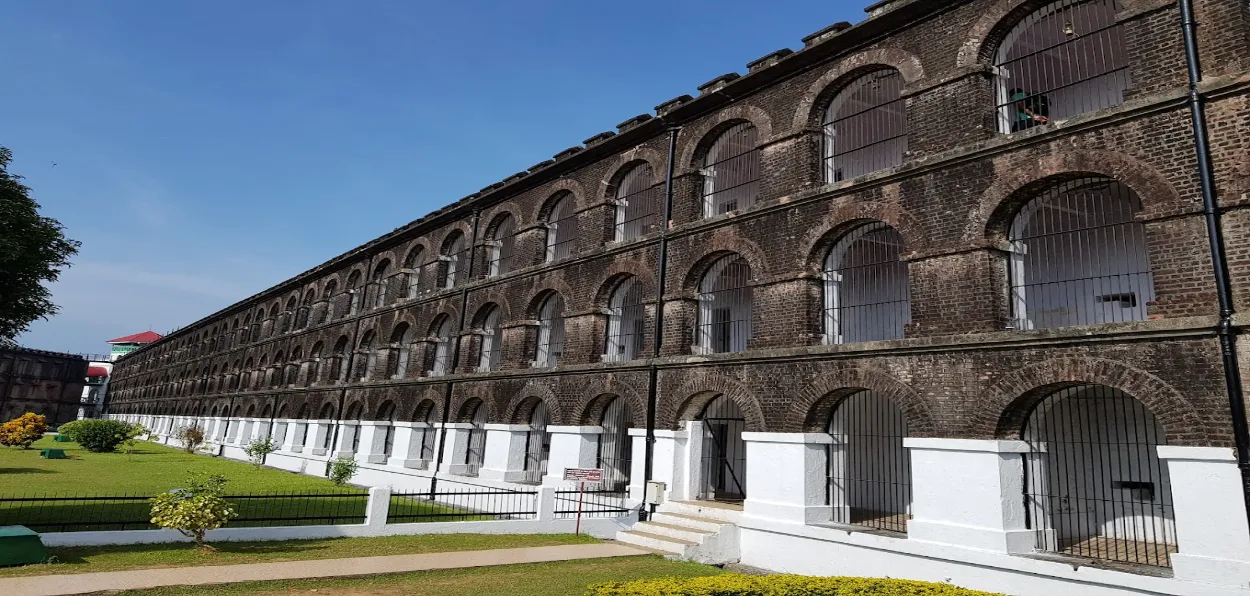
Saquib Salim
“Thanking you and all the donors concerned wholeheartedly, we would like to submit that in view of the recent happenings in the Andamans Cellular Jail i.e. flogging of a political prisoner, regarding which we have already submitted a representation to the India Government, we are not in a position either to celebrate the (Durga) Pujah or any other celebration at the present juncture and consequently we are compelled to forego such a friendly donation. Our Greetings, P.I. Prisoners.”
Above is the text of a letter sent by the Indian revolutionaries locked up at Cellular Jail in the Andamans to Mohan Lal Saksena (an M.L.A from Lucknow) in October 1937. They were returning the money sent by Mohan Lal Saksena for the celebrations of Durga Puja and Dussehra.
Durga Puja for the common people meant for festivities but for the revolutionaries who lived and died for the freedom of India the festival was also a weapon to defeat the colonial British government.
The first major alarm in the Andamans over the celebration of Puja as a revolutionary tactic was raised by W. S. Cosgrave, Chief Commissioner of A & N Islands, in 1935. He shot a letter to the British Government of India in Delhi reporting that in the garb of performing plays on Durga Puja in Cellular Jail the revolutionaries (the British called them terrorists) were preparing dummy rifles, which could be used to fight. Those who took part in the famous Chittagong Armoury Raid and were lodged in the jail were identified as the prominent leaders of this plan.
Cosgrave noted, “Paying a surprise visit early one day in January to the Jail, Captain Chaudhury saw from the roof of the Central Tower at about 5:45 a.m. some eight or ten P.I. Prisoners, armed with dummy wooden rifles, drilling in Yard No.1. On making enquiries he found that this had been going on for a long time…. Captain Chaudhuri discovered that some 20 or 25 dummy wooden rifles had been stored in the second cell (near the Central Tower) on the ground floor in Wing No. 2…. The prisoners in the Chittagong Armoury Raid case, led by Ananta Lal Singh, were the men who drilled themselves. early in the morning Ananta Lal Singh acted as spokesman when Captain Chaudhuri took away the dummy rifles…. The dummy rifles are made of heavy padouk wood and if used in a riot would have been quite as dangerous as loaded lathis. …These dummy rifles were, I understand, first manufactured in connection with a play produced by the P.I. prisoners during the Durga Puja holidays of 1934, some months before I came here.”
No wonder that in 1936, the next year, restrictions were imposed on the celebrations of Durga Puja in Cellular Jail. The celebrations were asked to be limited to two days instead of four. This restriction meant that the play should not be performed. The jail authorities noted that the prisoners even threatened the officials with a hunger strike. As a protest, they did not celebrate Durga Puja. The reason might be that without performance of play any celebration was of no use to their larger goal.
Mohan Lal Saksena, next year, to pressurise the jail authorities sent money from the M.L.As to the prisoners for the celebration of Durga Puja. This time a revolutionary had punched a jail warden and broke his nose. Revolutionaries, Dr. Narayan Roy and Ganesh Ghose, told the authorities that they would not celebrate as a protest against the flogging of this revolutionary who had beaten the jail official.
The jail officials believed that the protest was only the facade. The revolutionaries would not celebrate Durga Puja if their plays were not allowed with dummy rifles.
Durga Puja was central to the revolutionaries including Subhas Chandra Bose. While he was in Mandalay Jail in 1926, in a collective letter prisoners demanded allowances and freedom to celebrate Puja. The petition threatened the British government, “We submit that being an Eastern people, religion is an integral part of our daily and social life. For the vindication of religious rights, thousands of our countrymen suffered and are still suffering untold hardship and persecution in connection with the Akali movement. And in our province, over a thousand people have suffered imprisonment and many more have suffered different kinds of persecution in connection with the Tarakeswar Satyagraha movement. It was the Lord Jesus, himself an Asiatic, who in his inimitable style said that "man shall not live by bread alone."
This remarkable saying which is so true of humanity is much truer of people placed in our position. We hope this Government will not be altogether blind to the religious instincts of the Indian detainees lodged in their jails
